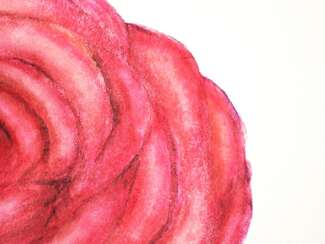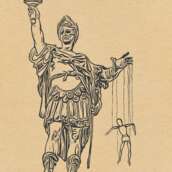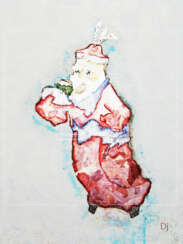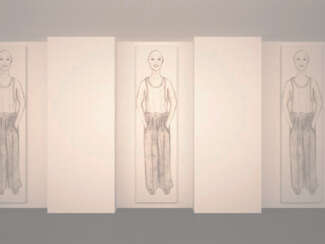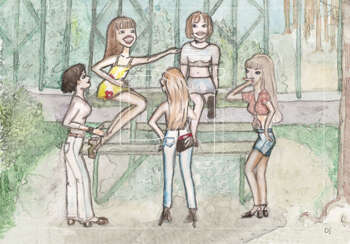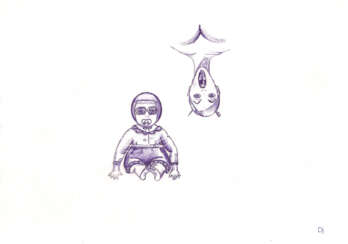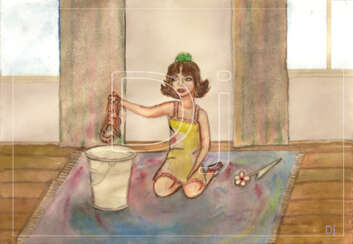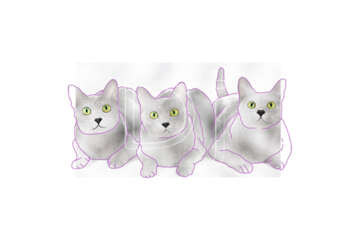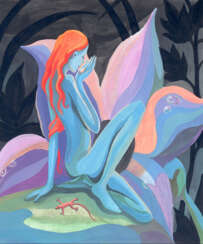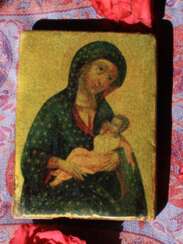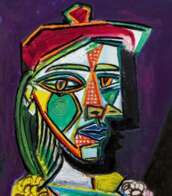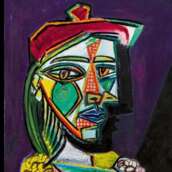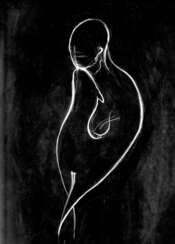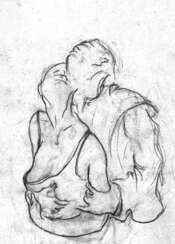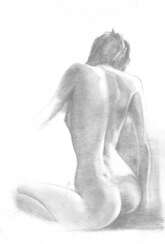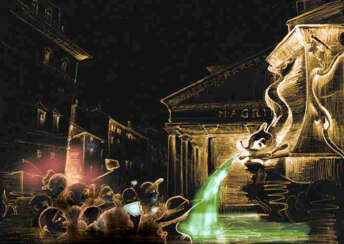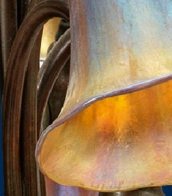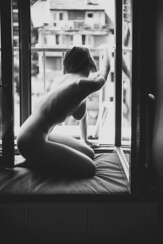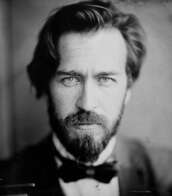44 Items by auctions and galleries:
printed reproduction
Пейзаж с морем, цветами и девушкой
Radiy Sivak (b. 1965) 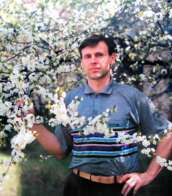 Shop Sivak Radiy
Shop Sivak Radiy

Radiy Sivak
01.01.1965
Ukraine
Каждый день, когда ночь накрывает планету и она замедляет свой бег, когда в глубине космоса рождаются новые звёзды, затихает шум городов и засыпают сверчки, а свежий воздух льётся над полями - я начинаю улавливать вибрацию космоса. И начинается магия. Голос свыше зовёт и приглашает в фантастическое путешествие в яркий мир, залитый светом, любовью и радостью. Подчиняясь призыву, я преодолеваю пространство и время, посещая другие планеты или отправляясь в прошлое нашей Земли. Моё сознание отправлется туда, где я не был никогда и нет границ фантазиям. Что это? Сон или явь? Или сон наяву?
В сиреневом тумане как будто я лечу, и передо мной встают волшебные миры с фантастическими видениями. Всё это настолько явно, что запоминается каждая маленькая деталь, кажда росинка на траве и каждый луч света, играющий в цветах. Это настощее чудо, приятное как чистая горная вода и Магия каждого дня. И эти приливы радостных желаний к творчеству повторяются постоянно.
Отображая этот мир в своих картинах, я хочу передать тебе салют своих безумных ярких чувств, чтобы ты поверил в добрую магию так же сильно, как и я.

Artist shop
Sivak Radiy
Ukraine
Number of products: 10
Spirit of flower (print )
Irina Nevshupa (b. 1975)  Shop Nevshupa Irina
Shop Nevshupa Irina

Irina Nevshupa
31.12.1975
Ukraine
Живу и работаю в г. Славутич (Киевская область). Основная специализация - художник-иллюстратор деткой книги уже около 20 лет. Так же занимаюсь росписью детской мебели из дерева, под заказ, и пишу картины.
Мои работы можно посмотреть на сайте :
https://www.facebook.com/NevshupaArt
https://www.instagram.com/irinanevshupa

Artist shop
Nevshupa Irina
Ukraine
Number of products: 18
Неизведанные дали.
Irina Kosenko (b. 1971)  Shop Kosenko Irina
Shop Kosenko Irina

Irina Kosenko
03.03.1971
Ukraine
Меня зовут Ирина, и я представляю искусство моих молодых дочерей Русланы, Дианы и Ольги.
Девочки начали рисовать очень рано. В 4 года они поступили в детскую академию искусств. С тех пор они постоянно участвуют в различных выставках, занимают высокие места в международных художественных конкурсах, и, самое главное, для этого было создано огромное количество отличных работ.
Я надеюсь, что их искусство будет должным образом оценено и на этом сайте, и у девушек будет еще больше поклонников их творчества.

Artist shop
Kosenko Irina
Ukraine
Number of products: 7
Cats
OLEKSII SHNEIER (b. 1956)  Shop SHNEIER OLEKSII
Shop SHNEIER OLEKSII

OLEKSII SHNEIER
06.02.1956
Ukraine
Dear Patron!
You’ll find in this Gallery the drawings reflect the impressions of the moment, giving you something to think about later. There are also genre paintings, things simply observed in a cafe, on the beach, at the airport and hastily scribbled on a napkin. There are dialogues about love, passion, about the Woman ... As an artist, if you let your hand wander freely around the sheet of paper, and then peer at the result, the chaotic strokes and lines miraculously line up in an image and the only thing that remains to be done is to remove everything extra. Most likely the end result will be just a dialogue with your subconscious and an innate childhood need to draw.
Truly yours Oleksy Shneyer, or simply -ША-

Artist shop
SHNEIER OLEKSII
Ukraine
Number of products: 12
Desire
OLEKSII SHNEIER (b. 1956)  Shop SHNEIER OLEKSII
Shop SHNEIER OLEKSII

OLEKSII SHNEIER
06.02.1956
Ukraine
Dear Patron!
You’ll find in this Gallery the drawings reflect the impressions of the moment, giving you something to think about later. There are also genre paintings, things simply observed in a cafe, on the beach, at the airport and hastily scribbled on a napkin. There are dialogues about love, passion, about the Woman ... As an artist, if you let your hand wander freely around the sheet of paper, and then peer at the result, the chaotic strokes and lines miraculously line up in an image and the only thing that remains to be done is to remove everything extra. Most likely the end result will be just a dialogue with your subconscious and an innate childhood need to draw.
Truly yours Oleksy Shneyer, or simply -ША-

Artist shop
SHNEIER OLEKSII
Ukraine
Number of products: 12
After Work
OLEKSII SHNEIER (b. 1956)  Shop SHNEIER OLEKSII
Shop SHNEIER OLEKSII

OLEKSII SHNEIER
06.02.1956
Ukraine
Dear Patron!
You’ll find in this Gallery the drawings reflect the impressions of the moment, giving you something to think about later. There are also genre paintings, things simply observed in a cafe, on the beach, at the airport and hastily scribbled on a napkin. There are dialogues about love, passion, about the Woman ... As an artist, if you let your hand wander freely around the sheet of paper, and then peer at the result, the chaotic strokes and lines miraculously line up in an image and the only thing that remains to be done is to remove everything extra. Most likely the end result will be just a dialogue with your subconscious and an innate childhood need to draw.
Truly yours Oleksy Shneyer, or simply -ША-

Artist shop
SHNEIER OLEKSII
Ukraine
Number of products: 12
In the Morning
OLEKSII SHNEIER (b. 1956)  Shop SHNEIER OLEKSII
Shop SHNEIER OLEKSII

OLEKSII SHNEIER
06.02.1956
Ukraine
Dear Patron!
You’ll find in this Gallery the drawings reflect the impressions of the moment, giving you something to think about later. There are also genre paintings, things simply observed in a cafe, on the beach, at the airport and hastily scribbled on a napkin. There are dialogues about love, passion, about the Woman ... As an artist, if you let your hand wander freely around the sheet of paper, and then peer at the result, the chaotic strokes and lines miraculously line up in an image and the only thing that remains to be done is to remove everything extra. Most likely the end result will be just a dialogue with your subconscious and an innate childhood need to draw.
Truly yours Oleksy Shneyer, or simply -ША-

Artist shop
SHNEIER OLEKSII
Ukraine
Number of products: 12
Roma
OLEKSII SHNEIER (b. 1956)  Shop SHNEIER OLEKSII
Shop SHNEIER OLEKSII

OLEKSII SHNEIER
06.02.1956
Ukraine
Dear Patron!
You’ll find in this Gallery the drawings reflect the impressions of the moment, giving you something to think about later. There are also genre paintings, things simply observed in a cafe, on the beach, at the airport and hastily scribbled on a napkin. There are dialogues about love, passion, about the Woman ... As an artist, if you let your hand wander freely around the sheet of paper, and then peer at the result, the chaotic strokes and lines miraculously line up in an image and the only thing that remains to be done is to remove everything extra. Most likely the end result will be just a dialogue with your subconscious and an innate childhood need to draw.
Truly yours Oleksy Shneyer, or simply -ША-

Artist shop
SHNEIER OLEKSII
Ukraine
Number of products: 12
Roma
OLEKSII SHNEIER (b. 1956)  Shop SHNEIER OLEKSII
Shop SHNEIER OLEKSII

OLEKSII SHNEIER
06.02.1956
Ukraine
Dear Patron!
You’ll find in this Gallery the drawings reflect the impressions of the moment, giving you something to think about later. There are also genre paintings, things simply observed in a cafe, on the beach, at the airport and hastily scribbled on a napkin. There are dialogues about love, passion, about the Woman ... As an artist, if you let your hand wander freely around the sheet of paper, and then peer at the result, the chaotic strokes and lines miraculously line up in an image and the only thing that remains to be done is to remove everything extra. Most likely the end result will be just a dialogue with your subconscious and an innate childhood need to draw.
Truly yours Oleksy Shneyer, or simply -ША-

Artist shop
SHNEIER OLEKSII
Ukraine
Number of products: 12
Roma
OLEKSII SHNEIER (b. 1956)  Shop SHNEIER OLEKSII
Shop SHNEIER OLEKSII

OLEKSII SHNEIER
06.02.1956
Ukraine
Dear Patron!
You’ll find in this Gallery the drawings reflect the impressions of the moment, giving you something to think about later. There are also genre paintings, things simply observed in a cafe, on the beach, at the airport and hastily scribbled on a napkin. There are dialogues about love, passion, about the Woman ... As an artist, if you let your hand wander freely around the sheet of paper, and then peer at the result, the chaotic strokes and lines miraculously line up in an image and the only thing that remains to be done is to remove everything extra. Most likely the end result will be just a dialogue with your subconscious and an innate childhood need to draw.
Truly yours Oleksy Shneyer, or simply -ША-

Artist shop
SHNEIER OLEKSII
Ukraine
Number of products: 12
Roma
OLEKSII SHNEIER (b. 1956)  Shop SHNEIER OLEKSII
Shop SHNEIER OLEKSII

OLEKSII SHNEIER
06.02.1956
Ukraine
Dear Patron!
You’ll find in this Gallery the drawings reflect the impressions of the moment, giving you something to think about later. There are also genre paintings, things simply observed in a cafe, on the beach, at the airport and hastily scribbled on a napkin. There are dialogues about love, passion, about the Woman ... As an artist, if you let your hand wander freely around the sheet of paper, and then peer at the result, the chaotic strokes and lines miraculously line up in an image and the only thing that remains to be done is to remove everything extra. Most likely the end result will be just a dialogue with your subconscious and an innate childhood need to draw.
Truly yours Oleksy Shneyer, or simply -ША-

Artist shop
SHNEIER OLEKSII
Ukraine
Number of products: 12
Морская фантазия
Radiy Sivak (b. 1965)  Shop Sivak Radiy
Shop Sivak Radiy

Radiy Sivak
01.01.1965
Ukraine
Каждый день, когда ночь накрывает планету и она замедляет свой бег, когда в глубине космоса рождаются новые звёзды, затихает шум городов и засыпают сверчки, а свежий воздух льётся над полями - я начинаю улавливать вибрацию космоса. И начинается магия. Голос свыше зовёт и приглашает в фантастическое путешествие в яркий мир, залитый светом, любовью и радостью. Подчиняясь призыву, я преодолеваю пространство и время, посещая другие планеты или отправляясь в прошлое нашей Земли. Моё сознание отправлется туда, где я не был никогда и нет границ фантазиям. Что это? Сон или явь? Или сон наяву?
В сиреневом тумане как будто я лечу, и передо мной встают волшебные миры с фантастическими видениями. Всё это настолько явно, что запоминается каждая маленькая деталь, кажда росинка на траве и каждый луч света, играющий в цветах. Это настощее чудо, приятное как чистая горная вода и Магия каждого дня. И эти приливы радостных желаний к творчеству повторяются постоянно.
Отображая этот мир в своих картинах, я хочу передать тебе салют своих безумных ярких чувств, чтобы ты поверил в добрую магию так же сильно, как и я.

Artist shop
Sivak Radiy
Ukraine
Number of products: 10
Lot 665 Gerhard Richter. Haggadah (P2)
Gerhard Richter (1932) 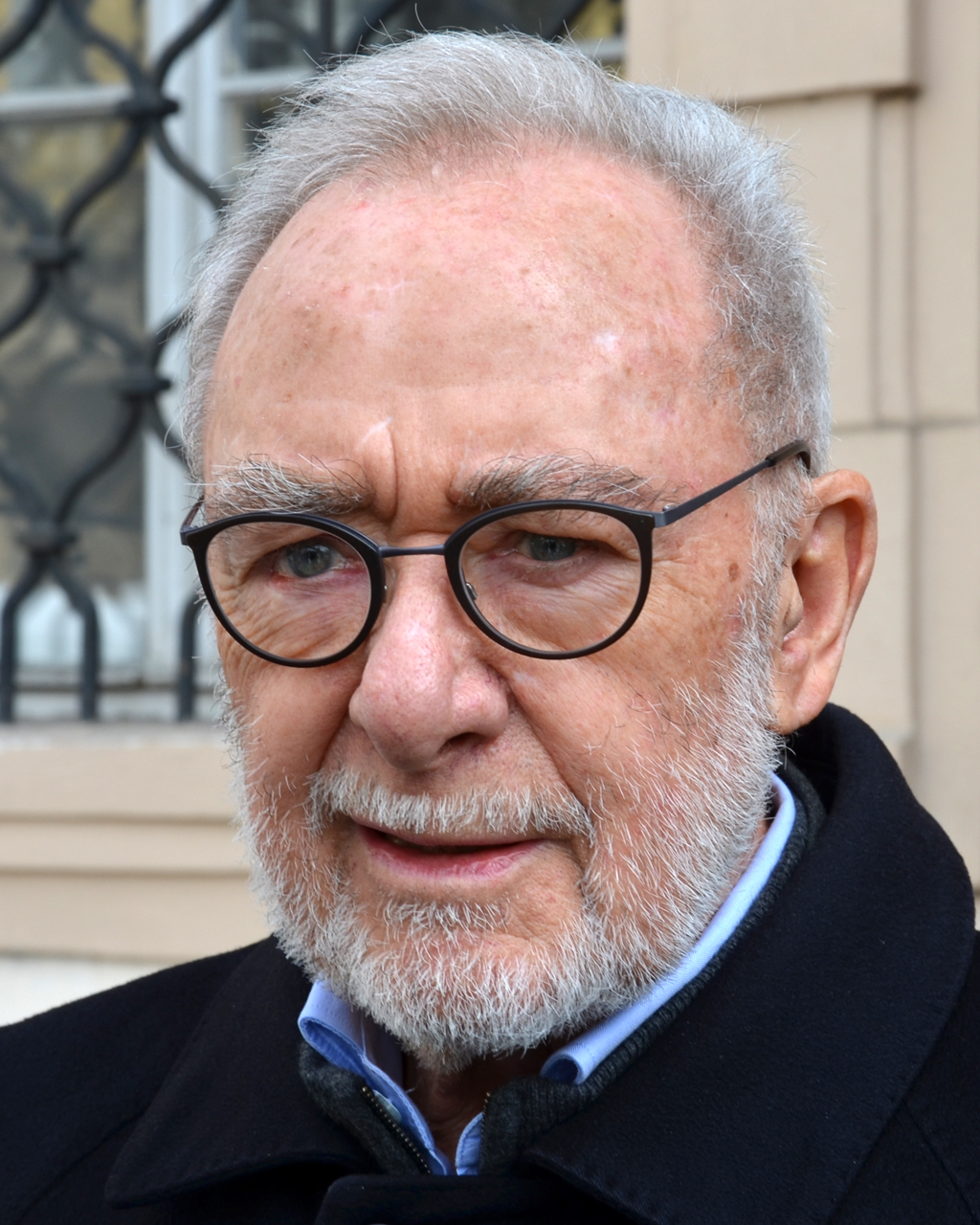 A541: Evening Sale
A541: Evening Sale 

Gerhard Richter
09.02.1932
Germany
Gerhard Richter is a German visual artist. Richter has produced abstract as well as photorealistic paintings, and also photographs and glass pieces. He is widely regarded as one of the most important contemporary German artists and several of his works have set record prices at auction.

VAN HAM Kunstauktionen GmbH
A541: Evening Sale
Date: 03.12.2025 18:00 UTC +01:00
Number of lots in the catalog: 519
Lot 98 SEEBOHM, Henry (1832-1895)
Valuable Books, Manuscripts and Photographs, including Highlights from The Royal Society of Medicine 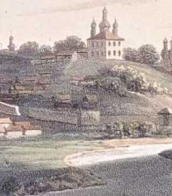

CHRISTIE'S
Valuable Books, Manuscripts and Photographs, including Highlights from The Royal Society of Medicine
Date: 10.12.2025 12:00 UTC +00:00
Number of lots in the catalog: 213
Lot 2 Jacobus de Voragine (c.1230-1298)
Valuable Books, Manuscripts and Photographs, including Highlights from The Royal Society of Medicine 

CHRISTIE'S
Valuable Books, Manuscripts and Photographs, including Highlights from The Royal Society of Medicine
Date: 10.12.2025 12:00 UTC +00:00
Number of lots in the catalog: 213
